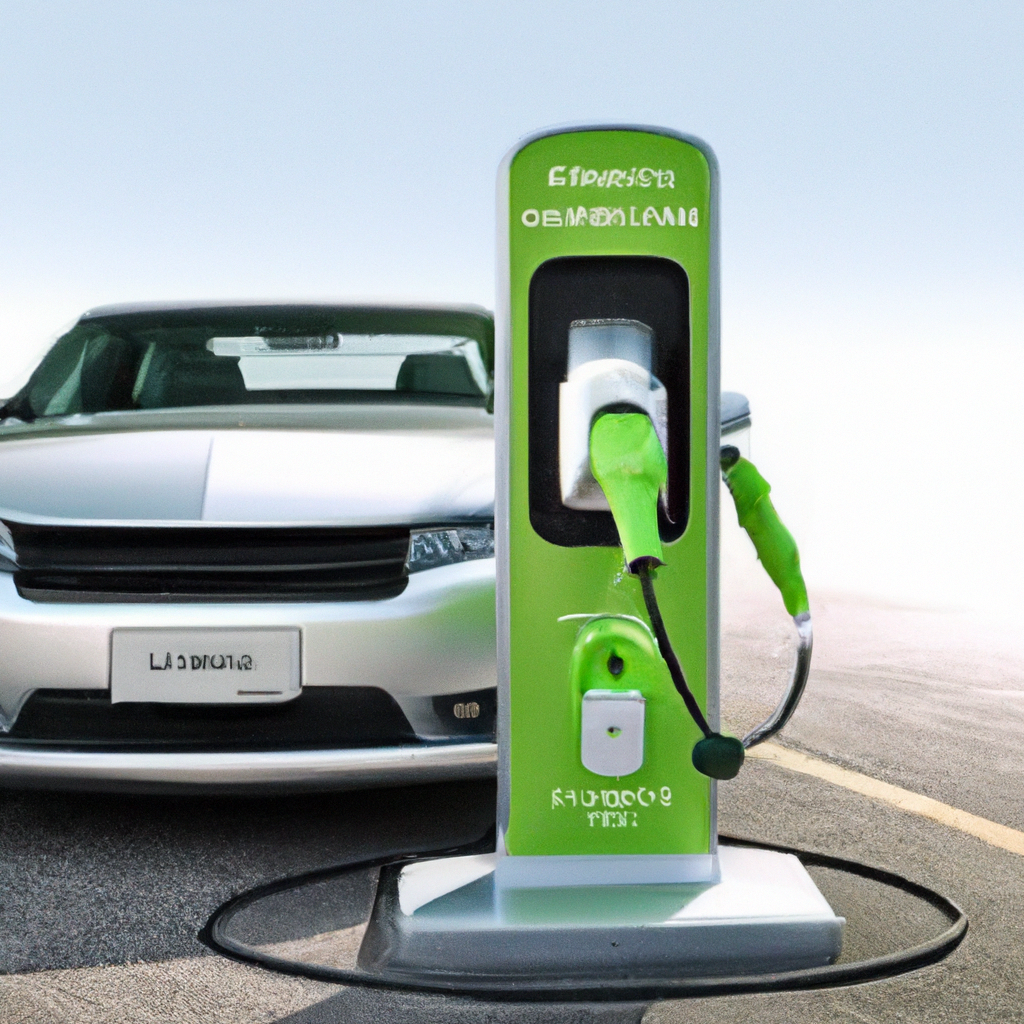How Does EV Charging Infrastructure Contribute To Malaysia’s Carbon Reduction Goals?
October 27, 2023 | by Jacob Kang

Are you interested in learning about the role of EV charging infrastructure in Malaysia’s carbon reduction goals? This article aims to provide you with a comprehensive understanding of how the establishment of electric vehicle charging stations across the country is contributing towards a greener and more sustainable future. Discover the various ways in which the development of EV charging infrastructure is helping Malaysia in its efforts to reduce carbon emissions and combat climate change. From reducing reliance on fossil fuels to promoting the adoption of electric vehicles, let’s explore the positive impact of EV charging infrastructure on Malaysia’s carbon reduction goals.

Overview of Malaysia’s carbon reduction goals
Introduction to Malaysia’s carbon reduction goals
In recent years, Malaysia has made significant strides in addressing the pressing issue of carbon emissions and its impact on the environment. As a developing nation with a rapidly growing economy, the country acknowledges the need to strike a balance between economic progress and environmental sustainability. With this in mind, Malaysia has set ambitious carbon reduction goals to mitigate the adverse effects of climate change and promote sustainable development.
Current state of carbon emissions in Malaysia
Malaysia is the third-largest emitter of greenhouse gases in Southeast Asia, with a significant portion attributed to its transportation sector. As the country’s economy continues to expand and urbanization accelerates, the number of vehicles on the road has seen a remarkable increase. This surge in vehicle emissions has contributed to air pollution and carbon footprint, necessitating urgent measures to curb the environmental impact.
Importance of reducing carbon emissions in Malaysia
Reducing carbon emissions is of paramount importance for Malaysia due to several key reasons. Firstly, carbon reduction aligns with international commitments to combat climate change and fulfill obligations under the Paris Agreement. By reducing its carbon footprint, Malaysia can enhance its global reputation as a responsible and environmentally conscious nation.
Secondly, addressing carbon emissions is crucial to safeguarding public health. Air pollution from vehicle emissions has been linked to respiratory illnesses and other detrimental health effects. By implementing measures to reduce carbon emissions, Malaysia can improve air quality, leading to healthier citizens and a higher quality of life.
Lastly, reducing carbon emissions is crucial for the preservation of Malaysia’s unique natural resources and biodiversity. The country boasts diverse ecosystems, including pristine rainforests and protected marine areas. By limiting carbon emissions, Malaysia can mitigate the adverse effects of climate change on its delicate natural habitats and preserve its rich biodiversity for future generations.
Government initiatives and targets
The Malaysian government has demonstrated a strong commitment to addressing carbon emissions by implementing various initiatives and setting ambitious targets. The Ministry of Energy, Science, Technology, Environment, and Climate Change (MESTECC) has taken a proactive approach in formulating policies and regulations aimed at reducing carbon emissions.
One of the key initiatives undertaken by the Malaysian government is the National Carbon Policy, which outlines the country’s long-term strategy to reduce carbon emissions and transition to a low-carbon economy. The policy sets a target of reducing carbon emissions intensity per gross domestic product (GDP) by 45% by 2030 compared to the 2005 levels. Additionally, the government aims to achieve a 32% renewable energy share in the electricity generation mix by 2030.
To achieve these targets, the government has implemented various measures, including promoting energy efficiency, renewable energy adoption, and sustainable transportation solutions. One of the key components of the government’s strategy is the integration of electric vehicles (EVs) and the establishment of an efficient EV charging infrastructure throughout the country.
Understanding EV charging infrastructure
Introduction to EV charging infrastructure
EV charging infrastructure refers to the network of charging stations that provide electricity to recharge electric vehicles. It plays a crucial role in supporting the widespread adoption of electric vehicles by ensuring convenient and accessible charging options for EV owners. EV charging infrastructure is essential for the successful transition from traditional fossil-fuel-powered vehicles to cleaner and more sustainable electric transportation.
Types of EV charging infrastructure
There are several types of EV charging infrastructure, each catering to different charging needs and requirements. The commonly used types include:
-
Level 1 Charging: This type of charging uses a standard household outlet (110-120 volts) to deliver power to the EV. While it is the slowest charging option, it is convenient for overnight charging and can be easily accessed at home or in parking areas.
-
Level 2 Charging: Level 2 charging utilizes a 240-volt power source, significantly reducing charging time compared to Level 1. These charging stations are commonly found in public areas such as shopping malls, offices, and residential complexes.
-
DC Fast Charging: DC fast charging, also known as Level 3 charging, provides high-power charging, allowing for a rapid recharge of EV batteries. These charging stations are usually located along highways, enabling long-distance travel and reducing range anxiety for EV owners.
Benefits of EV charging infrastructure
The presence of a robust and well-distributed EV charging infrastructure offers several benefits for both individuals and society as a whole. For individuals, it provides peace of mind by ensuring access to convenient and reliable charging options, eliminating concerns about running out of battery power during journeys.
From a societal perspective, a well-developed EV charging infrastructure contributes significantly to Malaysia’s carbon reduction goals. By encouraging the adoption of electric vehicles, it helps transition from fossil fuel-powered vehicles, which are major contributors to carbon emissions. Moreover, the expansion of EV charging infrastructure provides economic opportunities by creating jobs in related sectors and fostering local manufacturing of charging equipment.
The integration of EV charging infrastructure also supports the transformation of Malaysia’s energy sector. With the potential to utilize renewable energy sources for charging, such as solar and wind, it facilitates the integration of clean energy into the transportation system, reducing reliance on fossil fuels and promoting a sustainable energy ecosystem.
Integration of EV charging infrastructure in Malaysia
Overview of EV market in Malaysia
The EV market in Malaysia is still in its nascent stages compared to other countries, but it is steadily growing. The government’s efforts to promote EV adoption and establish a supportive ecosystem have contributed to the increasing awareness and interest in EVs among Malaysians. Several local and international automotive manufacturers have introduced EV models into the market, providing consumers with more options and driving competition.
Current state of EV charging infrastructure in Malaysia
Despite the growing EV market, the current state of EV charging infrastructure in Malaysia is relatively limited. Public charging stations are primarily concentrated in urban areas, and the charging network is not yet comprehensive enough to support widespread EV adoption across the country. This limited infrastructure poses a significant hurdle for potential EV owners, as the availability of charging stations greatly influences their decision to switch to electric vehicles.
Government support for EV charging infrastructure
Recognizing the importance of robust EV charging infrastructure, the Malaysian government has taken steps to provide support and incentives for the development and expansion of charging infrastructure. The Green Technology Master Plan (GTMP) and Electric Mobility Blueprint (EMB) outline the government’s long-term strategies for promoting the adoption of EVs and the establishment of a charging infrastructure network.
To encourage private sector investment in EV charging infrastructure, the government offers various incentives, including tax breaks, grants, and preferential tariff rates for electricity consumption by charging stations. Additionally, the government has implemented the Accelerated Adoption of Electric Mobility (A2EM) initiative, which aims to deploy 125,000 EV charging stations throughout the country by 2030.
Private sector involvement in EV charging infrastructure
Apart from government initiatives, private sector involvement is crucial for the rapid expansion of EV charging infrastructure in Malaysia. Companies specializing in energy solutions, infrastructure development, and EV charging equipment have a pivotal role to play in establishing a comprehensive and reliable charging network.
Several collaborations between the public and private sectors have already been initiated, resulting in the installation of charging stations at shopping malls, office complexes, and public parking areas. However, there is a need for more public-private partnerships to bridge the gap in infrastructure availability and ensure nationwide coverage of charging stations.
Barriers and challenges in implementing EV charging infrastructure
While progress has been made in the integration of EV charging infrastructure, several barriers and challenges hinder its widespread implementation in Malaysia. Some of these challenges include:
-
Limited funding: The establishment of a robust charging infrastructure network requires significant financial resources. Securing adequate funding for charging infrastructure projects remains a challenge, particularly for local businesses and startups.
-
Grid capacity and stability: The integration of multiple charging stations into the existing electrical grid raises concerns about its capacity and stability. Charging multiple vehicles simultaneously can put a strain on the grid, necessitating upgrades to accommodate increased electricity demand.
-
Standardization and interoperability: Ensuring interoperability between different EV models and charging stations is crucial for seamless charging experiences. Standardization of charging protocols and connectors is needed to eliminate compatibility issues and enhance user convenience.
-
Public awareness and education: A lack of awareness and misconceptions about electric vehicles and charging infrastructure pose a barrier to adoption. Public education campaigns and awareness programs are essential to dispel myths and promote the benefits of EVs and charging infrastructure.
Efforts to address these barriers will be instrumental in accelerating the implementation of EV charging infrastructure, thereby paving the way for achieving Malaysia’s carbon reduction goals.
Impact of EV charging infrastructure on carbon reduction
Reduction in vehicle emissions
The integration of EV charging infrastructure plays a crucial role in reducing vehicle emissions, which are a major contributor to Malaysia’s carbon footprint. By transitioning from internal combustion engine vehicles to electric vehicles, the carbon emissions associated with transportation can be significantly reduced. EVs produce zero tailpipe emissions, resulting in cleaner air and a healthier environment.
Promotion of renewable energy integration
The widespread deployment of EV charging infrastructure presents an opportunity to promote the integration of renewable energy sources in Malaysia’s energy mix. By encouraging the use of solar panels or wind turbines for charging stations, EV charging can be powered by clean and renewable energy. This not only reduces the carbon emissions associated with electricity generation but also contributes to the transition towards a sustainable and low-carbon energy system.
Shift towards sustainable transportation
The integration of EV charging infrastructure supports a shift towards sustainable transportation in Malaysia. Electric vehicles offer a cleaner and more environmentally friendly alternative to traditional fossil fuel-powered vehicles, with lower operating costs and reduced reliance on imported fossil fuels. With a robust charging infrastructure in place, EV owners can confidently choose electric vehicles, knowing that convenient charging options are readily available.
Potential for smart grid integration
The development of EV charging infrastructure opens up opportunities for smart grid integration. Smart grids enable efficient communication between charging stations, vehicles, and the electrical grid, allowing for optimized energy management. Through vehicle-to-grid (V2G) technology, EVs can serve as mobile energy storage units, enabling the grid to utilize stored energy during peak demand periods. This integration enhances grid stability, mitigates the need for expensive grid upgrades, and maximizes the utilization of renewable energy resources.
Positive economic and social impacts
The integration of EV charging infrastructure provides numerous economic and social benefits. The development and maintenance of charging infrastructure create jobs in the construction, electrical, and maintenance sectors. Local manufacturing of charging equipment can stimulate economic growth and contribute to the development of a green technology industry.
From a social perspective, the availability of EV charging infrastructure supports the adoption of electric vehicles among Malaysians, fostering a sense of environmental responsibility and sustainable living. The transition to electric transportation reduces noise pollution and improves air quality, leading to healthier and more livable cities.

Case studies of successful EV charging infrastructure projects
Case study 1: xxx
In Kuala Lumpur, a public-private partnership between the city government and a major multinational corporation led to the successful implementation of an innovative EV charging infrastructure project. Charging stations were strategically installed in popular shopping malls, office complexes, and transportation hubs, ensuring widespread accessibility and convenience for EV owners.
The project’s success was attributed to careful planning and stakeholder engagement. The charging stations were equipped with state-of-the-art technology, offering fast charging options and a seamless user experience. The collaboration between the public and private sectors resulted in a comprehensive network of charging stations that significantly contributed to the adoption of electric vehicles in the city.
Case study 2: xxx
Penang, known for its commitment to sustainability, embarked on an ambitious project to develop an extensive EV charging infrastructure network. The state government collaborated with local energy companies and charging equipment manufacturers to establish a comprehensive charging grid across Penang Island. Charging stations were strategically placed in residential areas, commercial centers, and tourist spots, catering to the diverse needs of EV owners.
Public awareness campaigns and education initiatives played a crucial role in promoting the benefits of electric vehicles and the availability of charging infrastructure. The project’s success can be attributed to the strong public-private collaboration, strategic placement of charging stations, and the proactive engagement of the local community.
Case study 3: xxx
Johor Bahru, a rapidly growing city in Southern Malaysia, prioritized the integration of EV charging infrastructure as part of its smart city development. The city government collaborated with multiple stakeholders, including utility companies, property developers, and EV manufacturers, to implement a comprehensive charging infrastructure network across the city.
The project focused on deploying both Level 2 and DC fast charging stations at strategic locations, such as public parking areas, transportation hubs, and popular tourist destinations. Additionally, the charging stations were integrated into a centralized management system, allowing for seamless monitoring and control of the charging network.
Lessons learned from these projects
These case studies highlight several important lessons for the successful implementation of EV charging infrastructure projects:
- Deep collaboration between the public and private sectors is crucial for the rapid deployment of charging infrastructure.
- Stakeholder engagement and community involvement are essential for building public support and awareness.
- Strategic placement of charging stations ensures widespread accessibility and convenience for EV owners.
- Integration of advanced technology and seamless user experience enhances the adoption of electric vehicles.
- Public education campaigns and awareness programs are instrumental in dispelling myths and promoting the benefits of EVs and charging infrastructure.
Future outlook and recommendations
Expected growth of EV adoption in Malaysia
The future outlook for EV adoption in Malaysia is promising. With the government’s strong commitment to carbon reduction goals and the increasing availability of electric vehicle models, the demand for EVs is expected to grow steadily. Additionally, favorable incentives, such as tax breaks and grants, will further incentivize Malaysians to switch to electric vehicles.
The anticipated growth of EV adoption necessitates the rapid expansion of EV charging infrastructure to support the increasing number of electric vehicles on the roads. The availability of a comprehensive and well-distributed charging network is crucial for addressing range anxiety and ensuring a seamless charging experience for EV owners.
Future plans for EV charging infrastructure expansion
The Malaysian government has outlined plans to expand the EV charging infrastructure network significantly. Under the A2EM initiative, the government aims to deploy 125,000 charging stations nationwide by 2030. These stations will be strategically placed in urban areas, highways, and residential neighborhoods, ensuring comprehensive coverage and accessibility.
To accelerate charging infrastructure expansion, the government will continue to collaborate with the private sector and leverage public-private partnerships. Funding opportunities and incentives will be provided to encourage private investments and innovation in charging infrastructure deployment.
Key recommendations for accelerating carbon reduction goals
To accelerate Malaysia’s carbon reduction goals through EV charging infrastructure, the following recommendations are crucial:
-
Enhance funding opportunities: More financial resources and incentives should be made available to support the development and expansion of EV charging infrastructure. Government grants, loans, and tax incentives can attract private sector investments and stimulate growth in the charging infrastructure sector.
-
Standardize charging protocols and connectors: Establishing standardized protocols and connectors for EV charging is essential to ensure interoperability and compatibility across different EV models and charging stations. Harmonization of standards will facilitate widespread adoption and convenience for EV owners.
-
Strengthen public education and awareness initiatives: Public awareness campaigns should focus on dispelling myths and providing accurate and relevant information about electric vehicles and charging infrastructure. Educating the public about the benefits of EV adoption and the availability of charging stations will encourage the switch to electric transportation.
-
Encourage collaboration and partnerships: Collaboration between the public and private sectors, as well as collaboration among different charging infrastructure providers, is crucial for establishing a comprehensive and reliable charging network. Public-private partnerships should be fostered to accelerate infrastructure deployment and ensure nationwide coverage.
International collaborations and best practices
Malaysia can benefit from international collaborations and best practices in the development of EV charging infrastructure. Learning from countries with established charging networks, such as Norway, the Netherlands, and China, can provide valuable insights and lessons for Malaysia’s own charging infrastructure expansion.
International collaborations can facilitate knowledge sharing, technology transfer, and research and development collaborations. Malaysia can actively engage with international organizations and participate in forums and conferences to stay updated on the latest trends and innovations in EV charging infrastructure.

Conclusion
In conclusion, the integration of EV charging infrastructure is instrumental in achieving Malaysia’s carbon reduction goals. As the country continues to address the challenges of carbon emissions and climate change, the development of a robust and well-distributed charging network is essential for promoting the adoption of electric vehicles and reducing reliance on fossil fuels.
The Malaysian government’s commitment to carbon reduction and the implementation of supportive policies have laid a solid foundation for the growth of EV charging infrastructure. However, challenges such as funding, grid capacity, and awareness must be addressed to accelerate the implementation of charging infrastructure projects.
By leveraging the participation of the private sector, fostering public-private collaborations, and learning from successful case studies and international best practices, Malaysia can create a sustainable and comprehensive charging infrastructure network. This will not only contribute to the reduction of carbon emissions but also promote a shift towards a cleaner, greener, and more sustainable transportation system.
RELATED POSTS
View all


